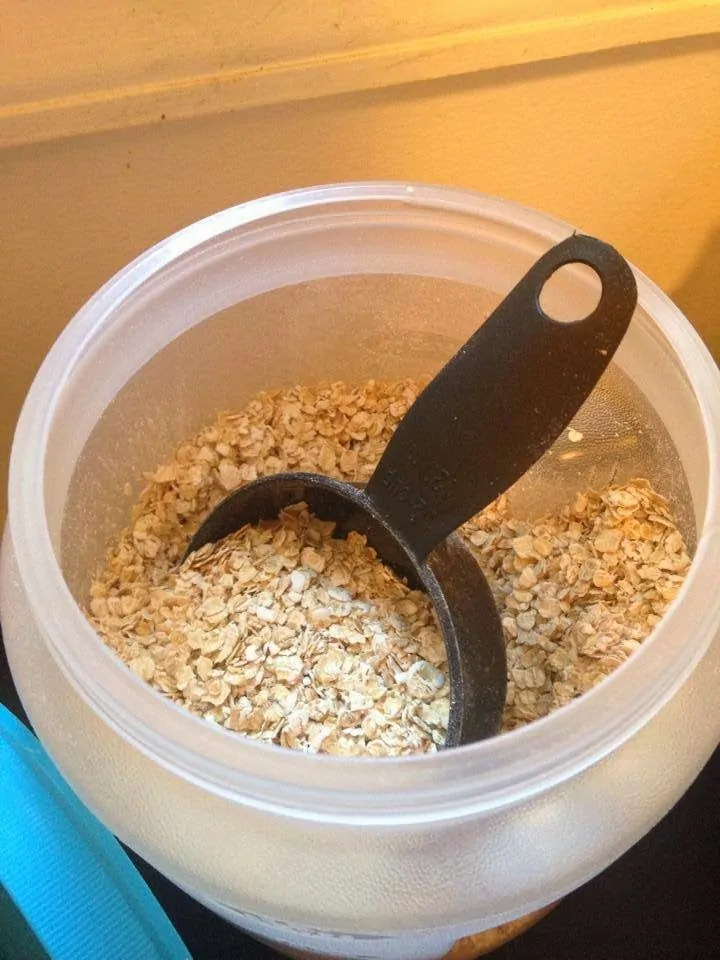But first…pre-ops!
(Or really anyone who feels like they need to get their lives/homes in focus to
be successful at WLS) I have a resource for you! It’s called The Bariatric Foodie Pre-Op Prep Kit (On the page where that link goes, choose “Downloads”). Click
that link to check it out. It’s one of my $2 downloads and it has LOTS of
information about how to prepare your life for WLS success. (NOTE: It’s a pdf
file so you must have Adobe Acrobat Reader or some other pdf reading software
on your computer or device in order to open this.)
Temptation. Do you ever struggle with it? Me too! It’s crazy because half the
time I know I’m not hungry. But then again, the human body is built so that we
are able to eat for a million and two reasons other than hunger. My philosophy?
Always have a strategy!
appropriate amount of good food.
There are Foodies out there who have lamented to me that
their non-op hubby/wife/kids/roommate just HAS to have their Little
Debbies/Doritos/Tasty Kakes, etc. and that, because of this dire need to keep
junk in the house, they, the innocent bystander post-op, have fallen victim to
the evil food.
true to the messages I’ve gotten.)
The stuff they want you to buy is right at eye level – easy to see and if you
see it you’ll buy it. Food companies pay big money to be at eye level for that
very reason. Conversely, the companies who did not pay the premium get
relegated to really high or really low shelves.
can keep all their junky food BUT make them agree to put it either in a lower
cabinet or way high in an upper cabinet. In my home EVERYTHING we shouldn’t eat
often is on the very top shelf of my upper cupboards. I have very high cupboards
so getting said food requires a step-stool, which requires the effort of
getting and climbing the step-stool, which I only do when I really and
genuinely want to cook said foods, which is not often!
a well established “safe foods list” (foods you can consistently eat without
threat of gut death). So now it’s time to use that knowledge to help your
process. Take a few hours every weekend (or whenever you have a day off) to
prep foods that you like and can eat. You can even cook meals ahead for
yourself and pre-portion them. Stack them up in the fridge and then it’s a
matter of grabbing and going (and maybe nuking if it’s a hot meal). In The Bariatric Foodie Breakfast Book I
give some good suggestions like making your own “fruit-on-the-bottom” yogurt
cups (there are yogurts with good stats out there but if you’d like to know for
sure what’s in your food, try making yourself!). I also sometimes make Protein
Shake Starters.
they are convenient! Make the healthy food as convenient as the junk and you’re
more likely to make the right choice.
portion sizes. Especially with dry goods and anything we measure in a cup. So
instead of leaving it up to your eyeballs, be prepared!
like oatmeal, Splenda, quinoa, etc. Inside those containers I put the
appropriate cup or spoon measure equivalent to a serving. So with Splenda, I
have a teaspoon measure in there. For oatmeal I put a quarter cup (an official
full serving is a half cup but I rarely eat that big an oatmeal portion anymore
and my kids are old enough to add fractions!).
I know this especially well. Even too much of healthy foods can be too much. Take almonds. I can eat a bunch of them! Yes, they are healthy fat BUT eating too many puts too many calories and too much fat in my day.
For some of us, it’s just cheaper to buy things like almonds or other healthy snacks in bulk. But after they come into your home they should not stay that way for long! Invest in some snack-sized zip-top bags (I get mine from the dollar store) and pre-portion things. It helps you to stay on track in a few ways. Firstly, you don’t have to guess a portion. Also, there’s something about an individually packaged portion that makes you want to stop at just one. The mental game of going for a second one is usually a good deterrent.
#5 – Best laid plans…
Remember, you can have the most well equipped kitchen in the world and you may still fall prey to trigger foods. What’s a trigger food? It’s one you can’t control and so you go bonkers whenever it’s around. You try to fight it. (You really do!) But it’s like the food sings to you until you eat it!
A healthy kitchen also starts at the grocery store. Be honest with yourself. Can you control yourself around the foods you’re buying? (A good way to tell is to recall how many times in the past you’ve not controlled yourself.) If not, set yourself up to only have to make ONE hard decision: passing the trigger food. Conversely, if you buy it…you have to make the decision every minute of every day it’s in your house not to go bonkers. I dunno about you, but I’m all for working smarter, not harder!
 Bariatric Foodie Play with your food
Bariatric Foodie Play with your food



